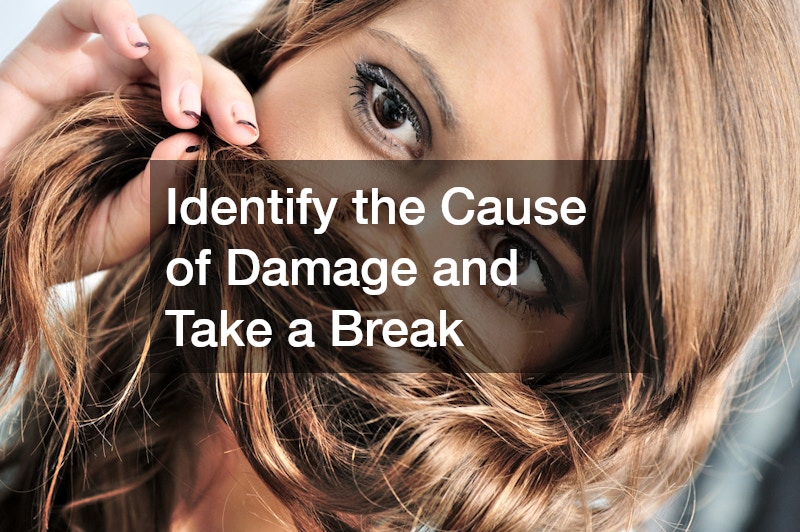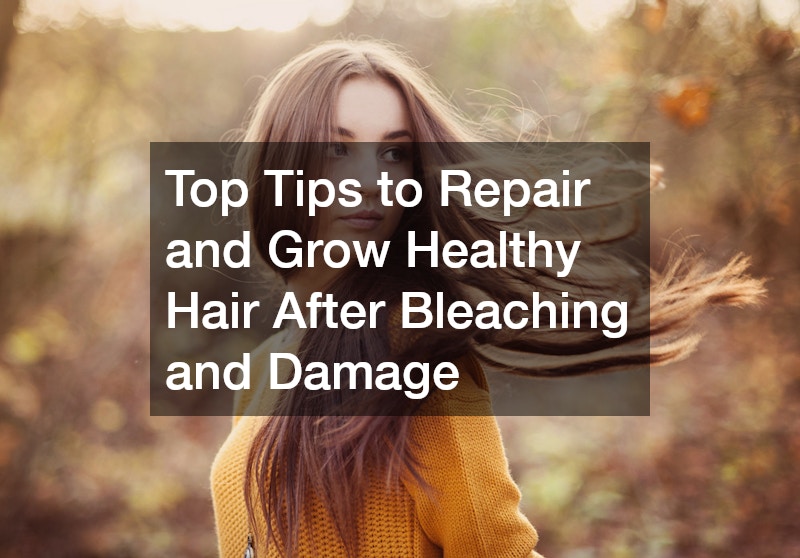Bleaching and heat styling can transform your look, but they can also leave your hair dry, brittle, and prone to breakage. Damaged hair often feels impossible to manage, but with the right approach, you can nourish it back to health while promoting new growth. Whether you’ve been overzealous with heat styling, bleaching, or coloring, the good news is that it’s never too late to improve the condition of your hair. Here are the top tips to repair damaged hair and grow it longer, stronger, and healthier.
1. Identify the Cause of Damage and Take a Break
Before diving into the healing process, it’s important to figure out what caused the damage in the first place. For most people, the culprits are heat styling, chemical processing, or over-bleaching.
Bleaching strips the hair of its natural oils and breaks down the structure, making it more fragile. Heat styling tools like straighteners, curling irons, and blow dryers weaken the hair by reducing moisture and elasticity.
Once you’ve identified the main source of damage, it’s essential to take a break from that activity. For instance, if bleaching has left your hair dry and brittle, stop lightening your hair for a while. The same goes for heat styling—give your hair a rest to allow it to regain some of its natural strength and moisture. You don’t need to give up bleaching or heat styling forever, but taking a break for at least 4-6 weeks gives your hair the time it needs to start recovering. This will also set a stronger foundation for future treatments.
2. Nourish Your Hair with High-Quality Oils
One of the best ways to repair damaged hair is by using nourishing oils. Not all oils are created equal, and the size of the oil molecules determines how deeply they can penetrate the hair shaft. Oils like coconut oil are popular, but they mainly sit on the surface of the hair. While they may make your hair feel soft initially, they don’t penetrate deeply enough to address internal damage.
Argan oil, on the other hand, has much smaller molecules, allowing it to penetrate deep into the hair and provide nourishment from within. This oil is rich in essential fatty acids and vitamin E, both of which help restore hair health by locking in moisture and repairing the hair structure. Hairdressers often recommend investing in a good-quality argan oil that works even after you’ve washed it off, continuously strengthening your hair from the inside out.
If you have bleached or color-treated hair, consider using argan oil products specifically designed for blondes, which often have a purple base to neutralize unwanted brassy tones. Redken and other professional brands offer highly effective argan oil treatments that provide long-lasting benefits.
3. Incorporate Reparative Creams Into Your Routine
Alongside oils, reparative creams are essential for anyone looking to reverse hair damage. These creams help rebuild the hair’s structure by delivering concentrated nourishment and hydration. Applying a reparative cream after towel-drying your hair can make a significant difference in its strength and elasticity.
Look for products like Olaplex No. 6 or similar creams that are known for their reparative properties. These products help reduce frizz, smooth the hair, and protect it from further damage. By regularly using a reparative cream, you’re not only treating the existing damage but also preventing future breakage.
4. Let Your Hair Air-Dry Before Using Heat
If you regularly use heat styling tools, you may be adding to your hair’s damage, especially when styling wet hair. Wet hair is at its most vulnerable because the hair cuticles are open and more susceptible to damage. Applying heat directly to wet hair can cause severe breakage and split ends.
Instead, allow your hair to air-dry at least 90-95% before using any hot tools. This will reduce the amount of heat exposure your hair experiences and prevent damage when it’s at its weakest. Air-drying your hair also helps it retain more moisture, allowing it to regain some of its natural strength before heat styling. This simple step can make a noticeable difference in the overall health of your hair over time.
5. Get Regular Trims to Prevent Breakage
Many people avoid getting haircuts when they’re trying to grow their hair, believing that trimming the ends will set them back in their hair growth journey. However, regular trims are essential if you want to grow long, healthy hair. Damaged ends are prone to splitting, and when they do, the split can travel up the hair shaft, leading to breakage higher up. This ultimately prevents your hair from retaining its length, even though it’s still growing from the roots.
By trimming just a small amount, about a quarter of an inch, every two months, you can stay ahead of split ends and breakage. This is less than the amount of hair you grow in the same period, meaning that regular trims won’t compromise your overall length. Hairdressers often recommend this approach to clients who want to grow their hair long but struggle with weak or damaged ends. Regular trims promote healthy hair growth and ensure that your ends stay strong and thick as your hair grows.
Conclusion
Repairing and growing damaged hair after bleaching or heat styling is a process that requires patience, but it’s entirely achievable with the right approach. By identifying the source of the damage, taking breaks from harmful habits, and investing in quality products, you can revive your hair’s health. Nourishing your hair with high-quality oils like argan oil, incorporating reparative creams, letting your hair air-dry before applying heat, and scheduling regular trims are all key to keeping your hair strong and healthy as it grows.
With consistent care, your hair can recover from damage and thrive, allowing you to enjoy both the length and the health of your hair. Taking these steps today will pay off in the long run, as you’ll be rewarded with shiny, resilient, and beautiful hair.
.


